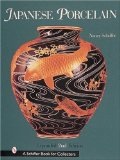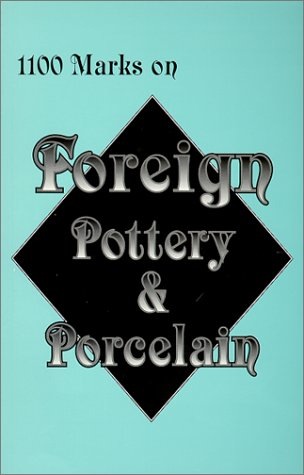Finding a good resource for identifying markings on Satsuma Pottery can be difficult. After all, we don't all have a well studied antiques expert in our pocket to ask for advice when we need them.
There are various books you can buy on the subject of identification of Japanese Pottery which includes the Satsuma range of pieces. These books form a good series of reference materials that you can use to identify the designs and styles of Satsuma and also examine the makers markings located on each piece.

Japanese Porcelain 1800-1950(Schiffer Book for Collectors) This book treads the line between a visual reference material for all manner of Japanese pottery styles including Arita and Imari, Kutani and Satsuma among many others. It features amazing full page images of each piece. noting the common styles and points to look out for. It is an excellent book for enthusiasts or trade collectors and sellers alike. |

1100 Marks on Foreign Pottery & Porcelain(Paperback) Featuring an excellent guide to finding markings on many different types of Satsuma and other world pottery, the 1100 Marks book will give you the confidence to make sure you are buying the real thing. |
 Possibly the best and most detailed book is called (unsurprisingly) "The Best Book On Satsuma" by Thomas S Kiernan, an expert on Japanese pottery and antiques. Featuring 236 pages of glorious images and markings, each described and translated, this is the book you need if you want to know as much about Satsuma Pottery as possible.This book is quite expensive and only normally available to buy direct from the author in Australia, so we recommend looking for it on eBay where copies of it turn up quite regularly. Possibly the best and most detailed book is called (unsurprisingly) "The Best Book On Satsuma" by Thomas S Kiernan, an expert on Japanese pottery and antiques. Featuring 236 pages of glorious images and markings, each described and translated, this is the book you need if you want to know as much about Satsuma Pottery as possible.This book is quite expensive and only normally available to buy direct from the author in Australia, so we recommend looking for it on eBay where copies of it turn up quite regularly.
Click here to search eBay for this book. |
11 replies on “Books For Identifying Satsuma Marks”
Would you help to check whether this is a copy one or a fake one? Which with bottom stamped “SATSUMA MADE IN CHINA” in color of blue
All pieces with English writing on are copies.
It would be very nice if you would reply to the comments more often. Especially regarding the markings. I understand not having the wherewithal to reply to the many, “What is this?” questions, but why have a comment section at all, if you’re not going to respond to pertinent ones? You did answer the rather humorous one above, stamped, “Made in China” but the one below, with, what appears to be a genuine marking went unanswered, which is incredibly frustrating. People who visit your site are interested and seeking knowledge. Your abundant lack of replies is, actually, rather uninviting and discourages return visits. Quite frankly, I’m at a loss at the point of even maintaining the comment section.
Hi, I picked this up last week. I’m guessing it’s Satsuma.
I appreciate any info to confirm of it’s Satsuma, age and value. Thank you for any input.
Cette signature dans le fond de ma paire de potiches Sarsuma est elle authentique ??
Do real markings fade?
I Would say that this looks like a “stamped” marking, not hand-painted. You can see where some parts of the kanji haven’t quite printed properly (the faded parts). Plus there is a faint outline where some have smudged or it has been done twice.
Modern piece? Approx age?
Definitely a modern copy – Satsuma is from Japan, not China.
Hi bought this beautiful vase in an auction hopefully it’s real and wonder if you could help with who made it and a time era please.
The marking at the top is Japanese for “11”. So, it was probably part of a larger set of vases or pieces.
I am not sure about the other marking though. I have not seen that one before.
Shame it has had a hole drilled into it, to make it into a lamp I suspect?